Most travelers see airports as necessary stops between destinations, rushing through terminals to catch their next flight. However, some airports around the world have transformed into breathtaking architectural wonders that rival famous museums and landmarks. These stunning transportation hubs offer everything from indoor waterfalls and ice-skating rinks to mountain views and luxury shopping experiences that make extended layovers feel like mini-vacations.
1. Singapore Changi Airport (SIN)

Walking through Changi Airport feels more like exploring a tropical paradise than waiting for a flight. The famous Jewel Changi houses the world’s tallest indoor waterfall, cascading 130 feet through a glass dome surrounded by lush greenery.
Travelers can swim in a rooftop pool, wander through butterfly gardens, or catch a movie in free entertainment areas. The airport has earned the title “World’s Best Airport” from Skytrax multiple times.
With over 280 retail stores and countless dining options, many visitors arrive hours early just to experience this architectural marvel that redefines what airports can be.
2. Incheon International Airport (ICN), South Korea
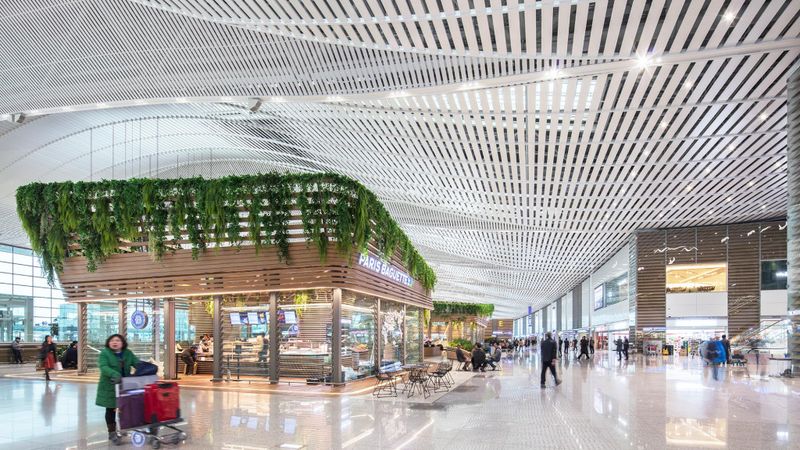
Korean culture comes alive at Incheon, where traditional meets modern in spectacular fashion. Passengers can lace up skates at the indoor ice-skating rink or explore cultural museums showcasing Korean heritage and art.
The sleek design incorporates natural materials and flowing lines that create a zen-like atmosphere. Free city tours during long layovers let travelers explore Seoul without leaving their luggage behind.
Traditional Korean gardens provide peaceful spaces for meditation, while the airport’s spa services offer weary travelers a chance to refresh with authentic Korean treatments before continuing their journey.
3. Dubai International Airport (DXB), UAE
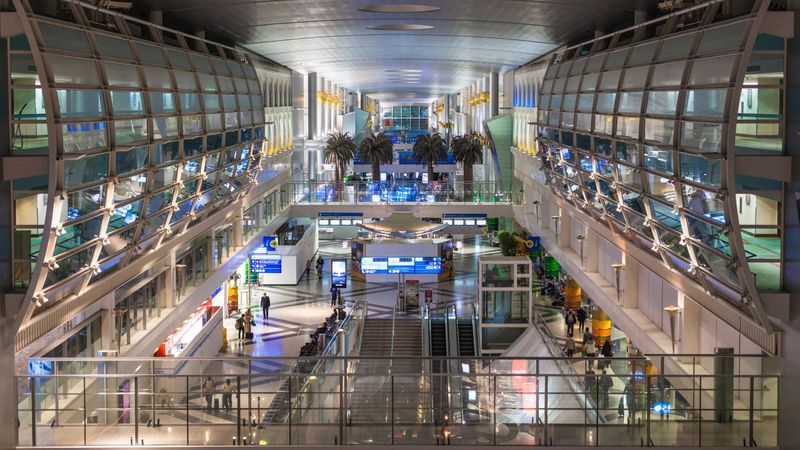
Gold leaf adorns the walls and palm trees line the concourses at Dubai International, creating an oasis of luxury in the desert. The world’s largest duty-free shopping area spans multiple terminals with everything from electronics to exotic perfumes.
Twenty-four-hour luxury shopping means you can buy a Rolex at 3 AM or browse designer handbags between flights. The architecture reflects Dubai’s commitment to opulence and innovation.
Sleeping pods and premium lounges cater to every comfort level, while the airport’s art installations showcase both traditional Arabic culture and contemporary international works that celebrate Dubai’s global connections.
4. Hamad International Airport (DOH), Qatar
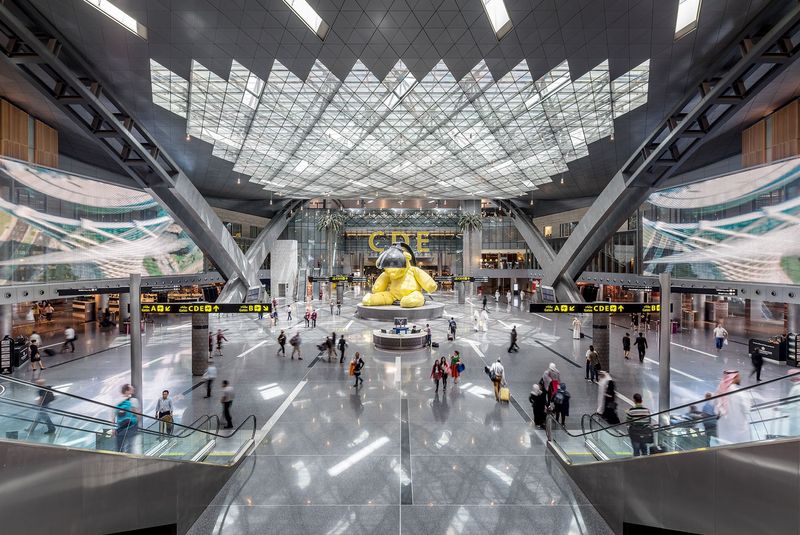
Ocean waves and desert dunes inspired the flowing architecture at Hamad International, where LED-lit arches create a constantly changing light show. A giant yellow teddy bear sculpture by artist Urs Fischer greets visitors in the main terminal.
Ultra-luxury lounges rival five-star hotels with private sleeping rooms, fine dining, and spa services. The airport’s design seamlessly blends Qatari culture with cutting-edge technology.
Art installations from world-renowned artists are scattered throughout the terminals, making every walk to your gate feel like a museum tour through contemporary masterpieces and cultural treasures.
5. Hong Kong International Airport (HKG)
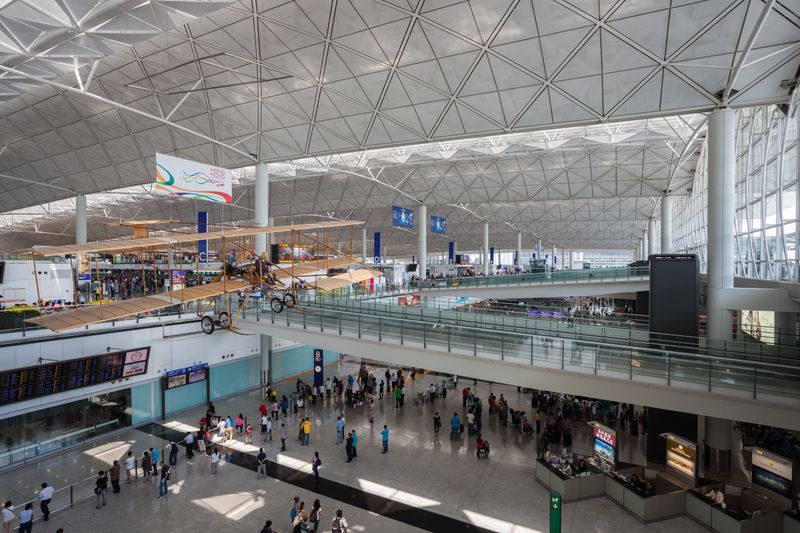
Planes appear to skim across water as they approach Hong Kong International, creating one of the world’s most dramatic airport landings. Mountains rise majestically in the background while the South China Sea sparkles below.
The Sky Deck offers panoramic views of runway operations with the stunning Hong Kong skyline as a backdrop. Floor-to-ceiling windows throughout the terminal frame these incredible vistas.
IMAX theaters and golf simulators provide entertainment, but many travelers simply sit by the windows watching planes take off over the water while enjoying dim sum at authentic Cantonese restaurants within the terminal.
6. Adolfo Suárez Madrid–Barajas Airport (MAD), Spain
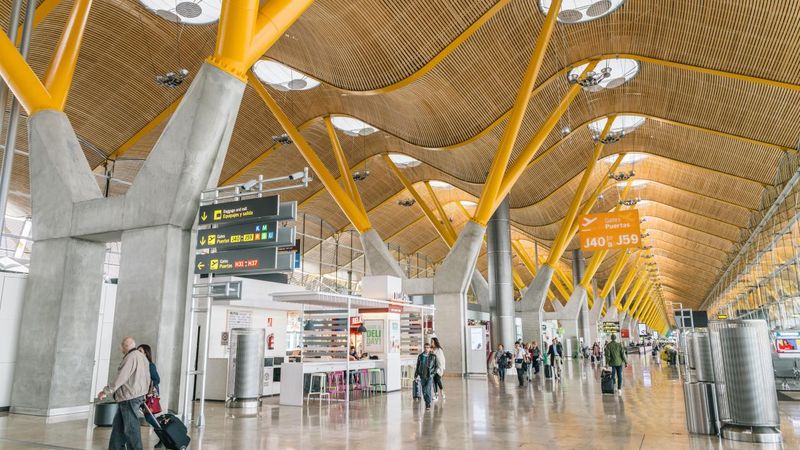
Rainbow-colored light tunnels guide passengers through Madrid-Barajas, while bamboo ceilings create a natural canopy overhead. Architect Richard Rogers designed the terminal with undulating roofs that seem to flow like Spanish hillsides.
The color-changing tunnels have become Instagram sensations, shifting through the spectrum as travelers walk between terminals. Natural light floods the spaces during the day, creating warm, welcoming atmospheres.
Spanish art and culture are celebrated throughout the terminal, with local restaurants serving authentic paella and tapas. The design perfectly captures Spain’s vibrant spirit and artistic heritage in architectural form.
7. Marrakech Menara Airport (RAK), Morocco
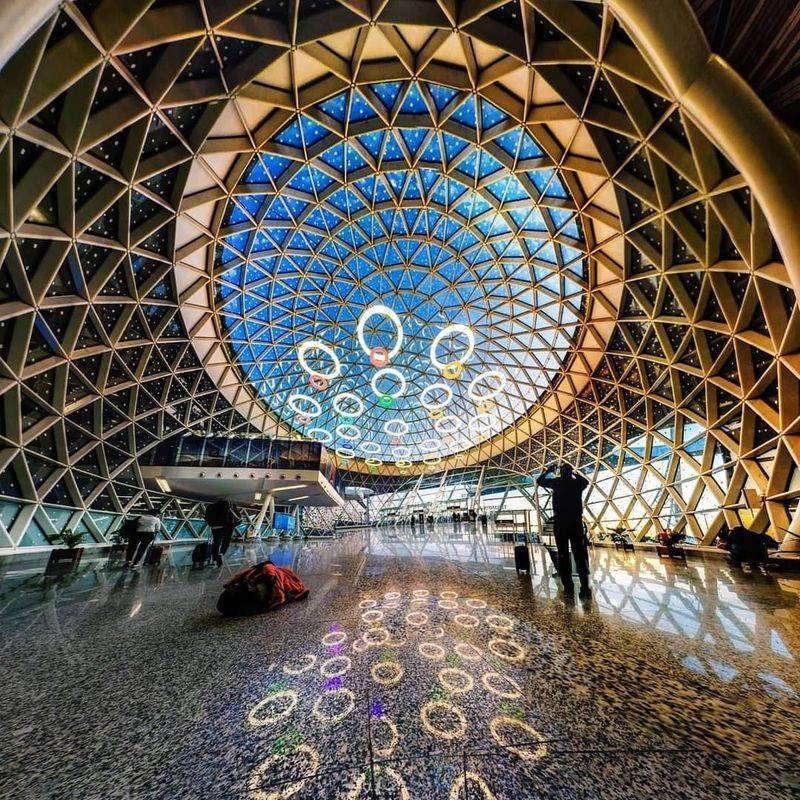
Stepping into Marrakech Menara feels like entering a luxury Moroccan riad rather than an airport terminal. Traditional Moorish arches frame every doorway while intricate mosaic tilework tells stories of Morocco’s rich cultural heritage.
Palm trees sway in interior courtyards, and the scent of orange blossoms fills the air. The terminal’s design honors traditional Islamic architecture with modern functionality.
Local artisans created the stunning geometric patterns that cover walls and floors, making every surface a work of art. The warm earth tones and flowing water features create an atmosphere of tranquility.
8. Kansai International Airport (KIX), Japan
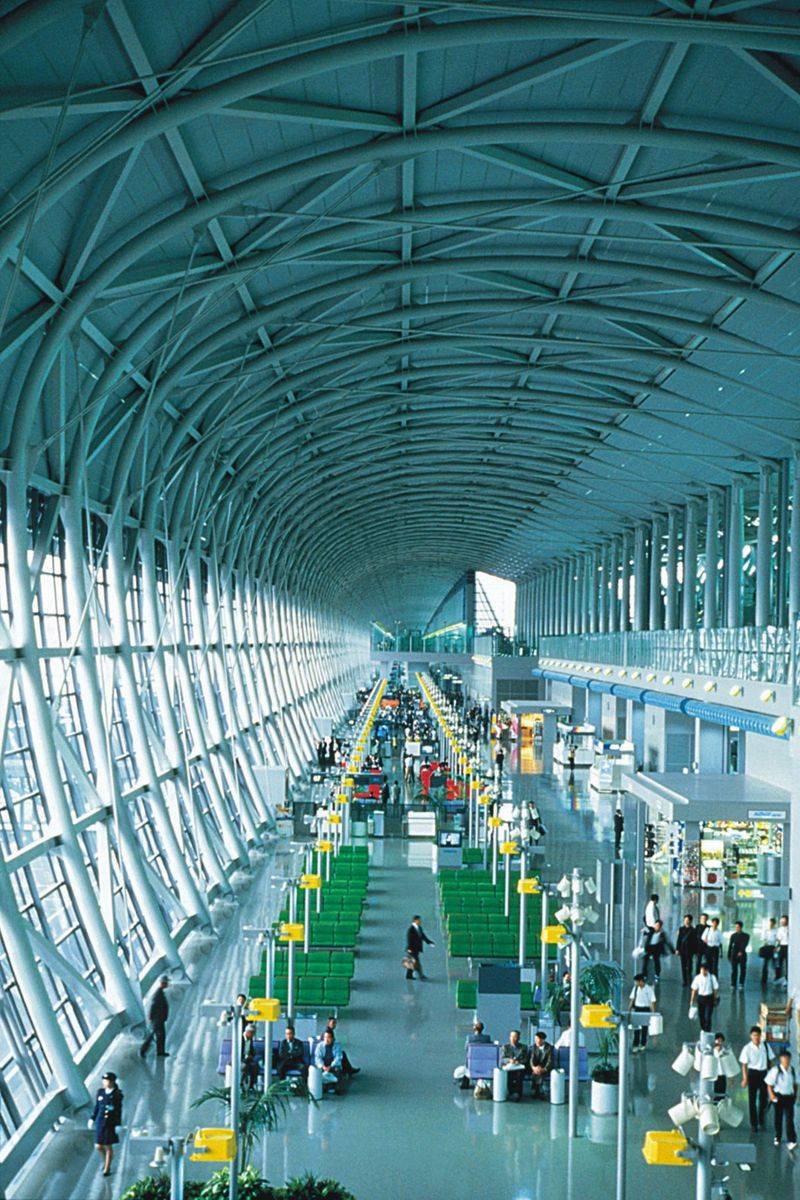
Built on a man-made island in Osaka Bay, Kansai International is an engineering marvel designed by renowned architect Renzo Piano. The four-kilometer-long terminal can withstand powerful typhoons and earthquakes.
The building’s curved roof mimics the shape of an airplane wing, creating a sense of flight even while on the ground. Large windows offer views of the surrounding bay and distant mountains.
Japanese minimalism meets cutting-edge technology throughout the terminal, with automated systems and clean lines creating efficiency and beauty. The airport literally rises from the sea, representing Japan’s innovative spirit and harmony with nature.
9. Queen Tamar Airport (KUT), Georgia
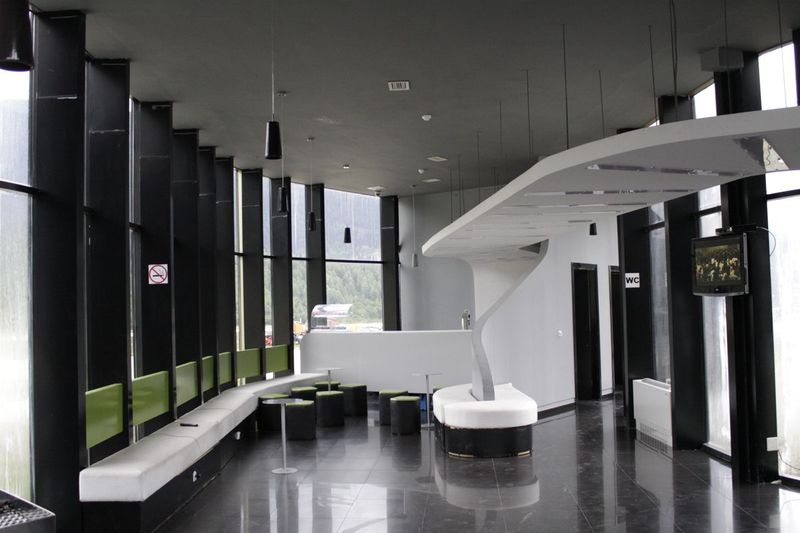
Floor-to-ceiling glass walls at Queen Tamar Airport frame the snow-capped Caucasus Mountains like a living postcard. Passengers feel as though they’re landing directly into a winter wonderland, especially during ski season.
The terminal’s modern design doesn’t compete with the natural beauty outside but instead showcases it perfectly. Mountain views are visible from nearly every angle within the building.
Ski equipment rental and storage facilities make this airport particularly convenient for winter sports enthusiasts. The dramatic mountain backdrop changes with the seasons, offering different spectacular views throughout the year for travelers heading to Georgia’s mountain resorts.
10. Wellington International Airport (WLG), New Zealand
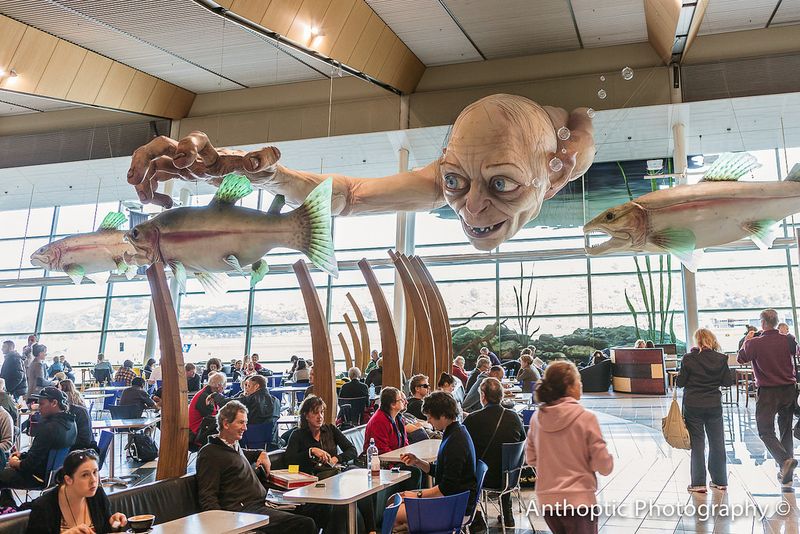
Lord of the Rings fans will feel right at home at Wellington Airport, where Hobbit-inspired architecture creates a magical atmosphere. The terminal’s curved wooden beams and earthy tones evoke the cozy feeling of a hobbit hole.
A giant Gollum statue hangs from the ceiling in the departures area, delighting movie fans and creating perfect photo opportunities. The design celebrates New Zealand’s film industry and natural beauty.
Local artwork and Maori cultural displays add authentic New Zealand character throughout the terminal. The airport perfectly captures the country’s reputation as Middle-earth while showcasing its real-world cultural treasures and artistic achievements.
11. Denver International Airport (DEN), USA
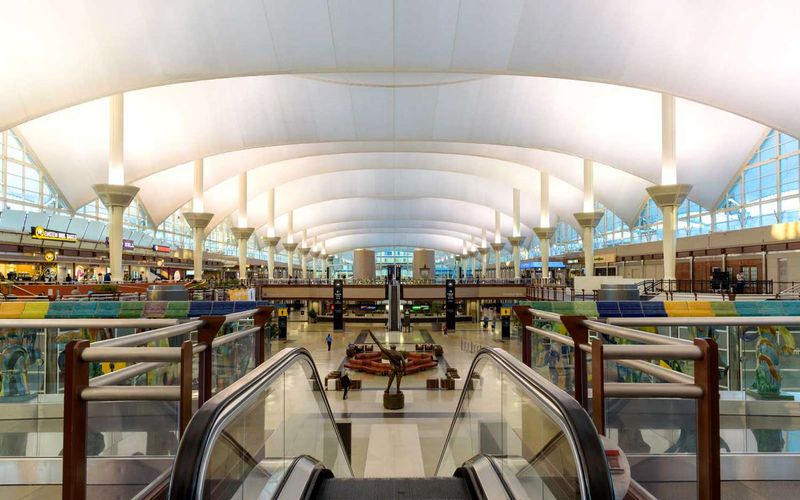
The iconic white-tented roof of Denver International mimics the snow-capped Rocky Mountains visible in the distance. This distinctive design has made the airport instantly recognizable and sparked countless conspiracy theories among travelers.
The famous blue mustang statue, nicknamed “Blucifer” by locals, greets visitors with glowing red eyes. Art installations throughout the terminal range from thought-provoking to mysterious, adding to the airport’s legendary status.
The Great Hall’s soaring ceiling and mountain views create a sense of the American West’s grandeur and adventure. Whether you believe the conspiracy theories or not, Denver’s airport is undeniably memorable.
12. Malvinas Argentinas Airport (USH), Argentina
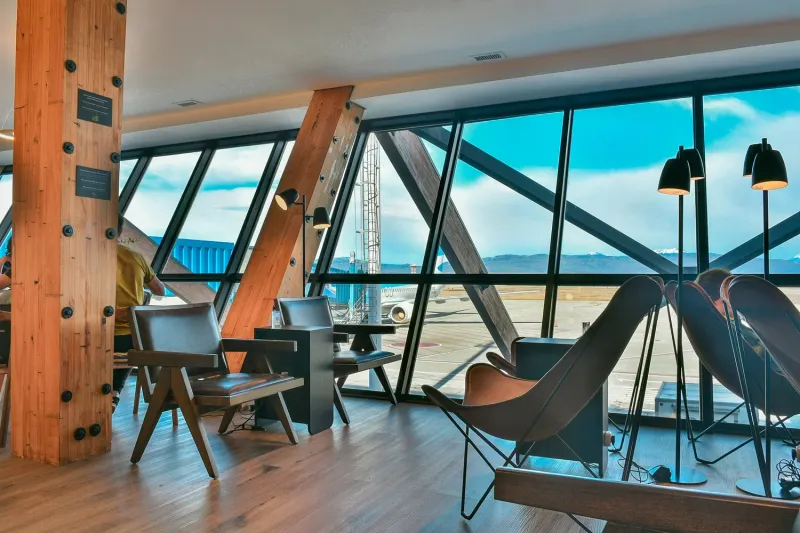
Landing at Ushuaia Airport feels like arriving at the edge of the world, with glass walls revealing the dramatic peaks of Patagonia’s mountains. Flights approaching the airport skim over glaciers and pristine wilderness.
The terminal’s design emphasizes the raw beauty of this remote location, with large windows framing views of the Beagle Channel and surrounding mountains. The architecture respects the harsh environment while providing modern comfort.
As the gateway to Antarctica and Tierra del Fuego, this airport serves adventurers seeking the ultimate wilderness experience. The bucket-list approach over glaciers makes the journey part of the destination itself.
13. Oslo Airport (OSL), Norway
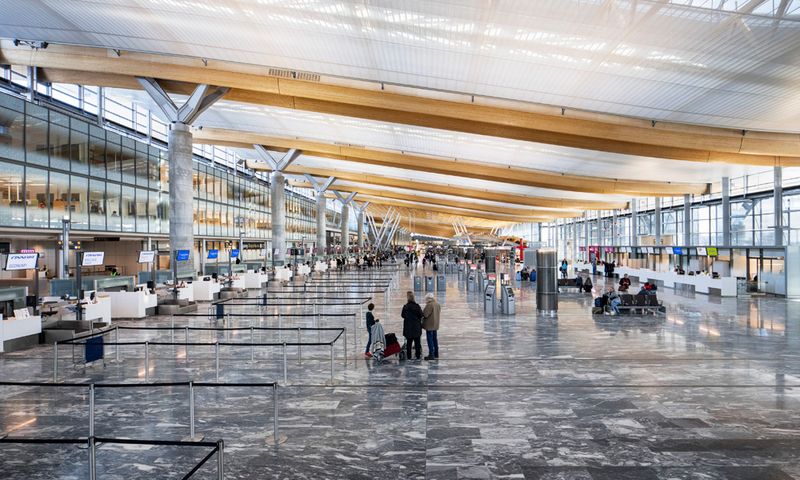
Scandinavian minimalism meets environmental innovation at Oslo Airport, where clean lines and natural materials create a serene atmosphere. The airport uses snow to heat its runways, showcasing Norway’s commitment to sustainability.
Free ski equipment storage makes winter travel convenient for visitors heading to Norway’s famous slopes. The design incorporates local wood and stone, connecting travelers to Norway’s natural heritage.
Large windows showcase the Nordic landscape, while energy-efficient systems demonstrate how airports can operate sustainably. The terminal feels more like a modern Scandinavian home than a busy transportation hub, creating calm in the chaos of travel.
14. Beijing Daxing International (PKX), China
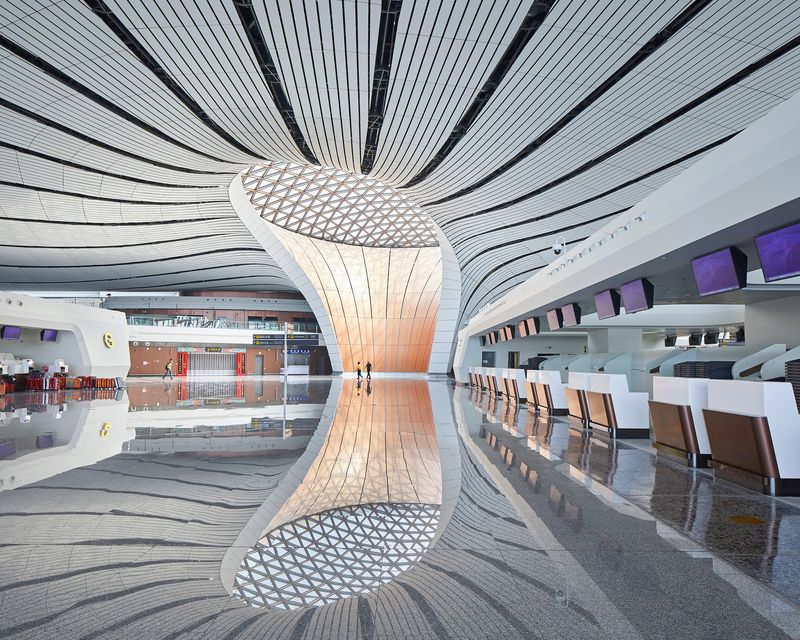
The starfish-shaped terminal at Beijing Daxing looks like something from a science fiction movie, with flowing curves and futuristic design elements throughout. This is the world’s largest single-building airport terminal by floor area.
Architect Zaha Hadid’s vision created a space that feels both massive and intimate, with natural light filtering through the unique roof structure. The design allows passengers to walk to any gate in just eight minutes.
Advanced technology integrates seamlessly with the artistic architecture, creating an airport experience that feels decades ahead of its time. The building itself has become a destination for architecture enthusiasts worldwide.



